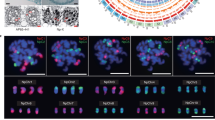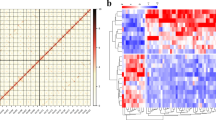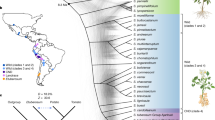Abstract
RECENT work on meiosis1,2 has given considerable support to the suggestion of King and Bamford3, based on mitotic investigations, that the sweet potato is an allopolyploid, 2n = 90, resulting from hybridization and natural doubling of the chromosome number in F1. The incidence of secondary associations of bivalent chromosomes at metaphase has been interpreted by Ting et al. 2 as indicating that the sweet potato, derived from somewhat related species, is a ‘relatively recent species’.
This is a preview of subscription content, access via your institution
Access options
Subscribe to this journal
Receive 51 print issues and online access
$199.00 per year
only $3.90 per issue
Buy this article
- Purchase on Springer Link
- Instant access to full article PDF
Prices may be subject to local taxes which are calculated during checkout
Similar content being viewed by others
References
Ting, Y. C., Kehr, A. E., and Miller, J. C., Amer. Nat., 91, 858 (1957).
Ting, Y. C., and Kehr, A. E., J. Hered., 44, 5 (1953).
King, J. R., and Bamford, R., J. Hered., 28, 279 (1937).
Sauer, C. O., in Handbook of South American Indians, 6, edit. by Steward, J. H. (Smithsonian Institution Bull. 143, Washington, 1950).
Ames, O., Economic Annuals and Human Cultures (Bot. Museum, Harvard University, Mass., 1939).
Author information
Authors and Affiliations
Rights and permissions
About this article
Cite this article
YEN, D. Evolution of the Sweet Potato (Ipomoea batatas (L.) Lam.). Nature 191, 93–94 (1961). https://doi.org/10.1038/191093b0
Issue Date:
DOI: https://doi.org/10.1038/191093b0
This article is cited by
-
The species ofIpomoea closely related to the sweet potato
Economic Botany (1972)
Comments
By submitting a comment you agree to abide by our Terms and Community Guidelines. If you find something abusive or that does not comply with our terms or guidelines please flag it as inappropriate.



